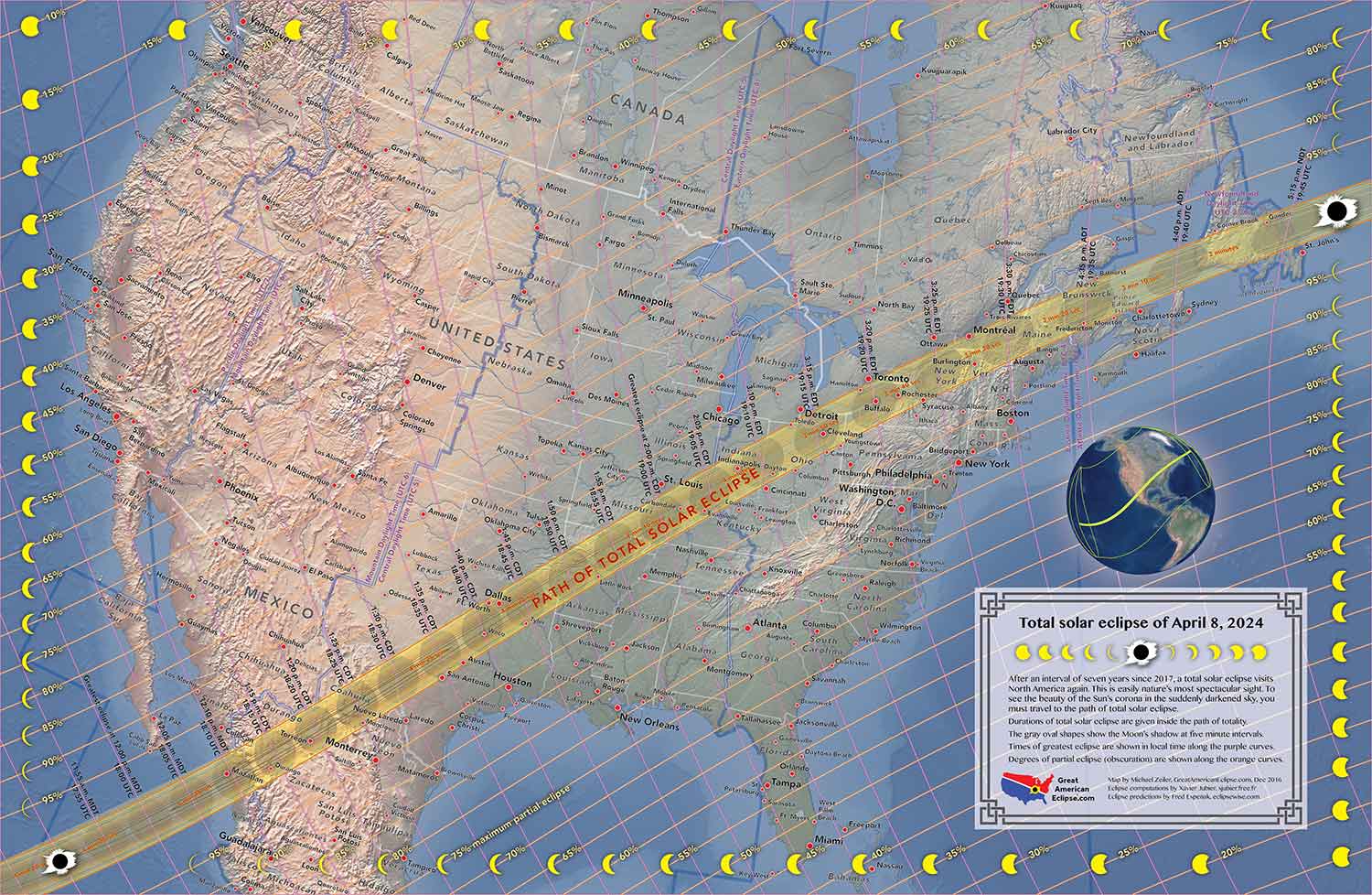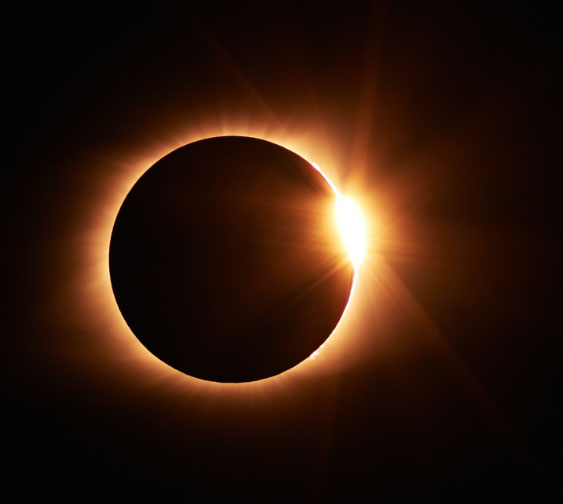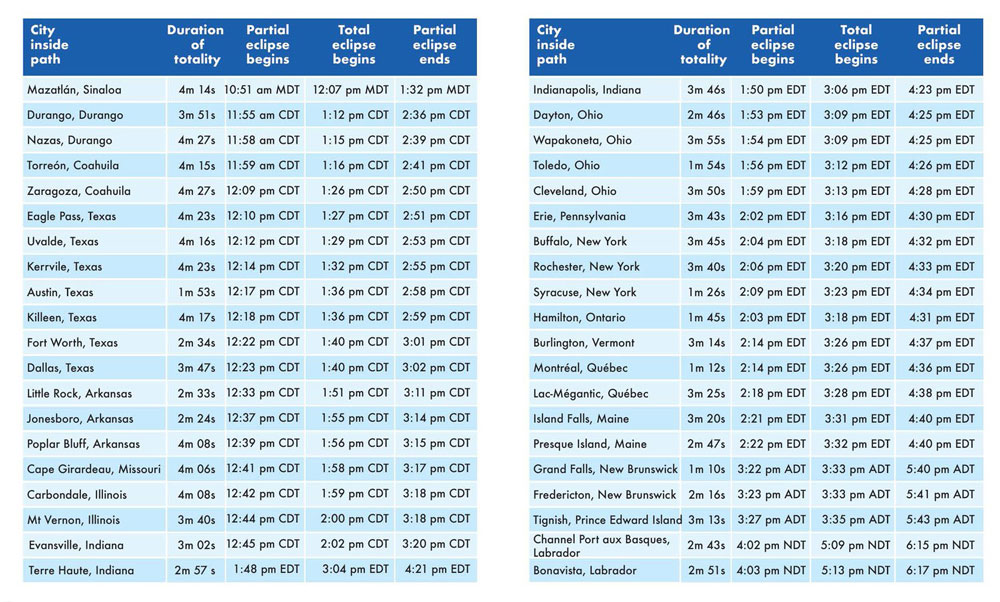Countdown to the Ring of Fire
On April 8, 2024 sky-gazers across North America are in for a treat when a total solar eclipse will pass over Mexico, the United States and Canada.
Eventhough we are months ahead from this fascinating event, fans are already booking hotels within the path of totality to secure a spot and not miss out, since a total solar eclipse won’t be visible in North America again until August 2044.
What’s there to observe? The sky will darken as it would at dawn or dusk, and there are several stages of the eclipse that sky-gazers anticipate. The duration of totality will be up to 4 minutes and 27 seconds
The moon’s shadow first touches Mexico at Mazatlan. Then it travels northeast through Mexico and enters the United States at Texas, cuts a diagonal all the way across the country to Maine, and then visits the maritime provinces of Canada.

The ovals in the map show the shadow of the Moon at five minute intervals. This path is called the path of totality.
What is a total solar eclipse? A total solar eclipse occurs when the moon passes between Earth and the sun, completely blocking the sun’s face. When the moon begins to cross in front of the sun, the star’s rays will shine around valleys on the moon’s horizon, creating glowing drops of light around the moon in a phenomenon called Baily’s beads. As totality nears, Baily’s beads will quickly disappear until a single point of light remains, resembling a glistening giant diamond ring. The diamond ring will disappear when totality arrives, and there is no longer any sign of direct sunlight. Bright stars or planets may shine in the dark sky, and the air temperature will drop as the sun disappears.
What to wear to protect your eyes during the eclipse? Looking directly at the sun without proper specialized protection is always unsafe, and during an annular eclipse, even though the moon will be passing in front of the sun, it’s still not safe to look directly into the sun with the naked eye since the sun’s light is never fully obstructed.
NASA advises wearing specialized eye protection. Looking at the sun through binoculars, a camera lens or a telescope without using a special-purpose solar filter can instantly cause severe eye injury. Eclipse glasses and sunglasses are not the same, NASA warned.
Safe solar viewers are thousands of times darker than sunglasses. NASA advises inspecting your eclipse glasses or handheld viewers before use to make sure they’re not torn, scratched or otherwise damaged.
We’re excited to announce the upcoming celestial events!

The Eclipse “Ring of Fire”
On October 14th, 2023 a unique celestial event, an annular solar eclipse, will be visible in the skies across North, Central, and South America, providing an extraordinary spectacle for observers.
Truly a once in a lifetime opportunity, since Peg Luce, who serves as the acting director of the Heliophysics Division at NASA headquarters, mentioned that this splendid celestial occurrence will enable millions of individuals to experience “the awe and wonder of observing a stunning ring of fire eclipse.”
“The next annular eclipse seen in this part of the country is actually going to be in 2046,” Korreck said. “It’s going to be a long stretch before we will see this phenomenon again, so we’re really encouraging folks to go out there and observe safely.”
What’s there to observe? An hour and 20 minutes after the partial eclipse begins, the moon will move directly in front of the sun, creating the ring of fire. Depending on your location along the path, this phase will last between one and five minutes.

Sources: https://www.cnn.com/2023/10/02/world/annular-solar-eclipse-october-2023-preview-scn/index.html https://edition.cnn.com/2023/06/23/world/2024-total-solar-eclipse-guide-scn/index.html https://www.greatamericaneclipse.com/april-8-2024



















